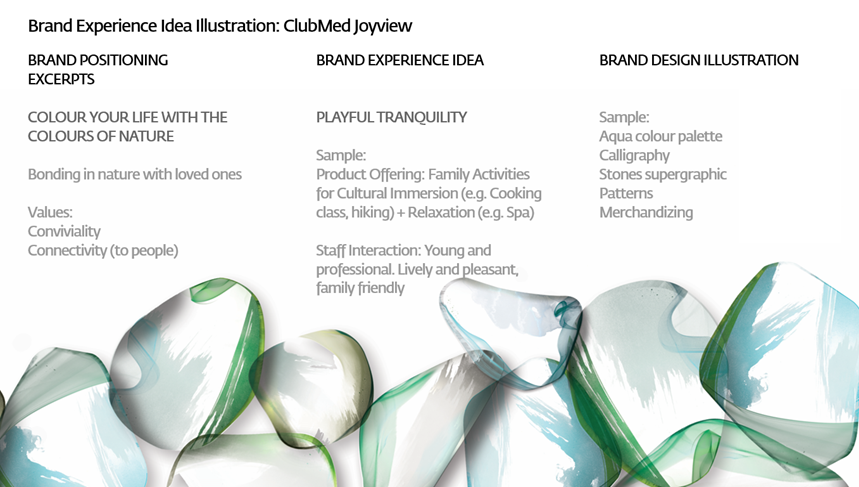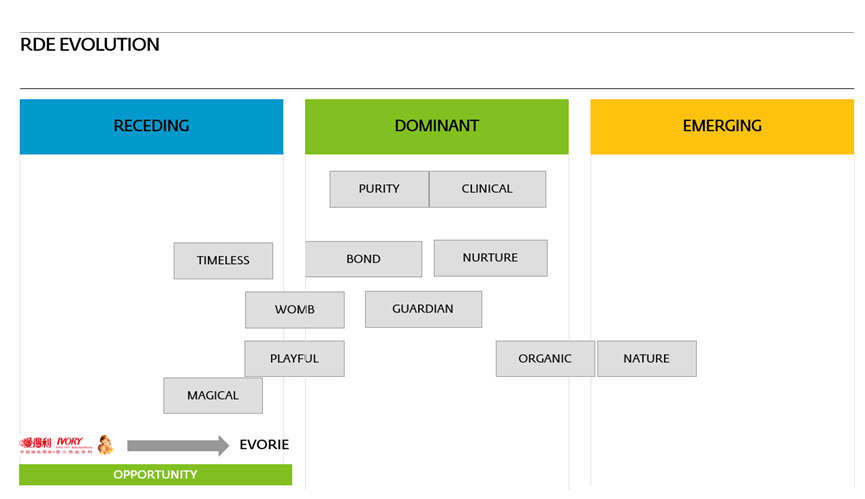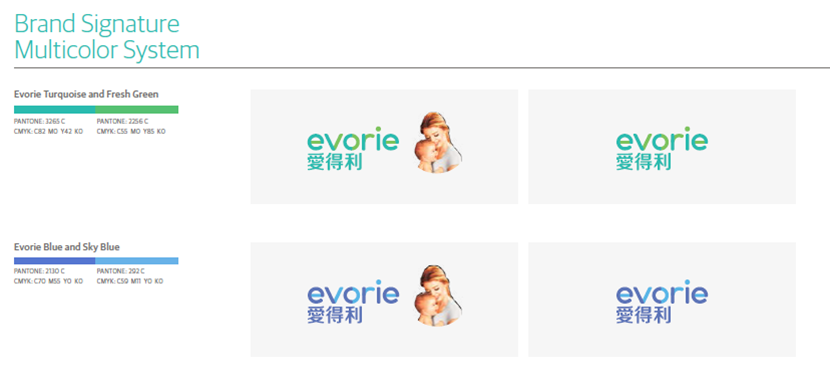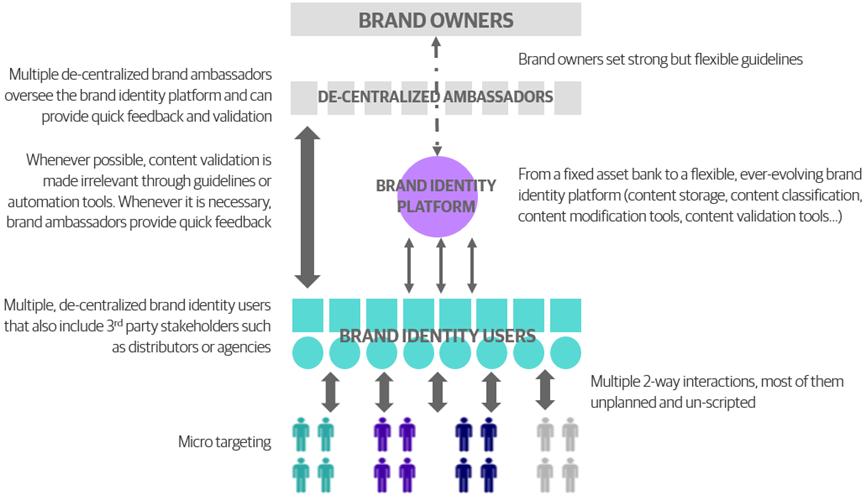
Let’s face it, design is in right now. Whether the trend was started by Apple, Hipsters, Pinterest, or some other evolutionary force, it’s hard to say. But undoubtedly, in today’s creative landscape, design gurus abound.
The popularity of design also makes it more accessible, which presents both benefits and challenges. When a brand requires design there are many places they can turn, including websites and apps that generate logos for free. The question arises: What does this mean for brand identity design? Do these algorithms replace strategists and designers?
Let’s take a look at several insights on what really matters in brand identity design, and why. In taking a closer look, we are sure to see that solid brand design is much more than just generation.
What Matters? The Starting Point
Great design doesn’t happen in a moment, it is realized through a process. As with any process, the starting point is critical. In brand design, the starting point is the strategic context: Which market and category is the brand in? What point is the brand at in the brand development life cycle? What design trends are at play? The interpretation of a brand’s strategic environment requires strong knowledge and experience in branding, and cannot be done by computers – at least not yet. Depending on the brand’s situation, certain factors may take on increased importance in the design solution. For example, for a new brand, it is important for the design to stand out to attract attention and build awareness, yet for a leading brand, managing identities within their portfolio may be the key concern. It is also important that the brand positioning is well defined so it can be brought to life through design.
Based on the brand positioning and strategic design insights, a creative idea can be articulated. And based on this idea, the creative process begins.

What Matters? Exploration Tools
Once you have a creative idea, it can be systematically explored. This will bring out multiple and rich design directions, as well as facilitate decision-making.
So how exactly can we explore a creative idea? The ingenious mind of a great creative director is important, yet we can also leverage various tools to make sure we have exhausted creative possibilities as well as design constraints. By listing out potential constraints thoroughly during the briefing stage, the design process can require less iterations, or at least designer time can be better allocated for refinements to produce design elements with deeper impact. By organizing/structuring the exploration of constraints, it can also trigger creativity. The work of Designer and Art Director Mauricio Trentin, for example, can provide designers with frameworks for exploring constraints as well as creative solutions.
We place a strong emphasis on culturally relevant design, and thus we leverage unique resources such as semiotics and cultural research for category mapping and visual trends; workshops for design innovation; and consumer research for design development. This way, we can call on both micro level insights and macro level trends to inform our design.

What Matters? Selection Criteria
At this point, from the creative idea several design concept directions have been explored. Perhaps there are 1-2 directions that are favorites of the client-side brand team, and within those directions there may be a couple options of potential expressions on the identity or packaging application level. But now, how can the team select the best solution to move forward with?
The team will have defined several key criteria, based on the strategic context: for example, the design should be unique and stand out, and emphasize codes relevant to the target audience, such as cute typography or icons. From there, it may be obvious what the best solution is. If it is still challenging to make a final selection at this point, consumer research can provide both spontaneous reactions and detailed feedback on the design options. Based on this feedback the design may be refined, or, it could stay as it is. Regardless, by utilizing consumer research the brand team will be aware of what perceptions exist so they can prioritize other branding/marketing activities to either counteract negative perceptions or capitalize on positive ones.

The end result? Design solutions that are both on-brand and insights-grounded.
What Matters? Design Management
Too often, great brand design ideas struggle during the implementation phase. Effective brand design projects must extend into design management to ensure the creative assets are realized and delivered in the way they were intended to.
We call on several tools to facilitate design management:
- Design Guidelines: Strong design guidelines are essential to managing the consistency and integrity of the brand identity system. This includes Brand Identity, Packaging, Communication, Digital, and Store Design guidelines, as well as Visual Identity Management digital tools.
- Production Supervision: Brand designers should oversee the production of visual assets to ensure alignment with the design intent. This includes brand stationery & communications printing, packaging production, in store installations, and more.
- Roadmaps & Planning: New brand identities, rebranding, campaigns or store openings all require supporting analysis and roadmap planning to ensure brand equity is consistently built.
- Training: Every employee is a brand ambassador— they need to be trained in basic brand identity to use it consistently and accurately in their everyday work.
- Tracking: Brand design usage needs to be checked intermittently to make sure it is still implemented and managed effectively. As needed, we can help address challenges to get the brand back on track.
What Matters? Digital
The landscape that brand design operates in is constantly changing, and design solutions need to be adapted to the emerging context. In recent years, the main transformative force at play has been digital.
Now, brand design is not simply about adapting or extending traditional design assets for digital platform, like adjusting your logo colours to look good on screen. We see more and more that brand identities from a creative standpoint are challenged by the characteristics of the digital landscape – whether it is about stretching your brand identity across new touchpoints (traditional web, mobile, wearables, online banner sizes), reacting in real-time to unforeseen events, or learning how to design packaging to include digital elements.
One way to ensure alignment is to place digital at the beginning of the creative process. This way, the essence of the brand design is developed to come to life in the digital world. According to Ryan Wang, Senior Design Manager at Labbrand, “Aside from the color, typeface and icons, what defines identity in the digital realm is a consistent set of interactive behaviors.” Two recent examples include Netflix, which developed a conceptual and visual thread to unify every touchpoint. The new brand identity, based on the idea of “The Stack”, is a UI system as well. Google also recently evolved their brand identity for more functional usage in various products and touchpoints.
But, we cannot stop with great initial design for digital – we also must build systems for organizing and managing brand identity design across touchpoints. Now, there are more and more stakeholders that influence and interact with brand design online, including PR agencies, e-commerce distributors, and globally-dispersed internal teams. We see a more extensive and dynamic ecosystem for brand design, a proliferation of touchpoints as well as brand objectives for various stakeholders and channels. So what’s a brand to do?
Compared to previous best practices, now a de-centralization of brand identity allows for more effective and engaging digital design programs. According to Kevin Gentle, Director of Digital Strategy at Labbrand, “Authority to validate design assets must be decentralized to multiple ambassadors that stand closer to the market. Brands must go from a vision of a rigid asset bank to that of a multi-functional, ever-evolving brand identity platform.” This type of platform can enable a flexible and authentic brand identity in the digital space.

Conclusion
Here is a recap of What Matters in brand identity design:
- The Starting Point
- Exploration Tools
- Selection Criteria
- Design Management
- Digital
This isn’t all that matters, there are other considerations. Nevertheless, what becomes clear is that design isn’t just magic— the consideration of strategic elements and practical constraints during the creative process is essential for great design.
In the future there may be robots capable of creativity. But for now, we definitely need designers and strategists to build brand identities. So let’s get to work.